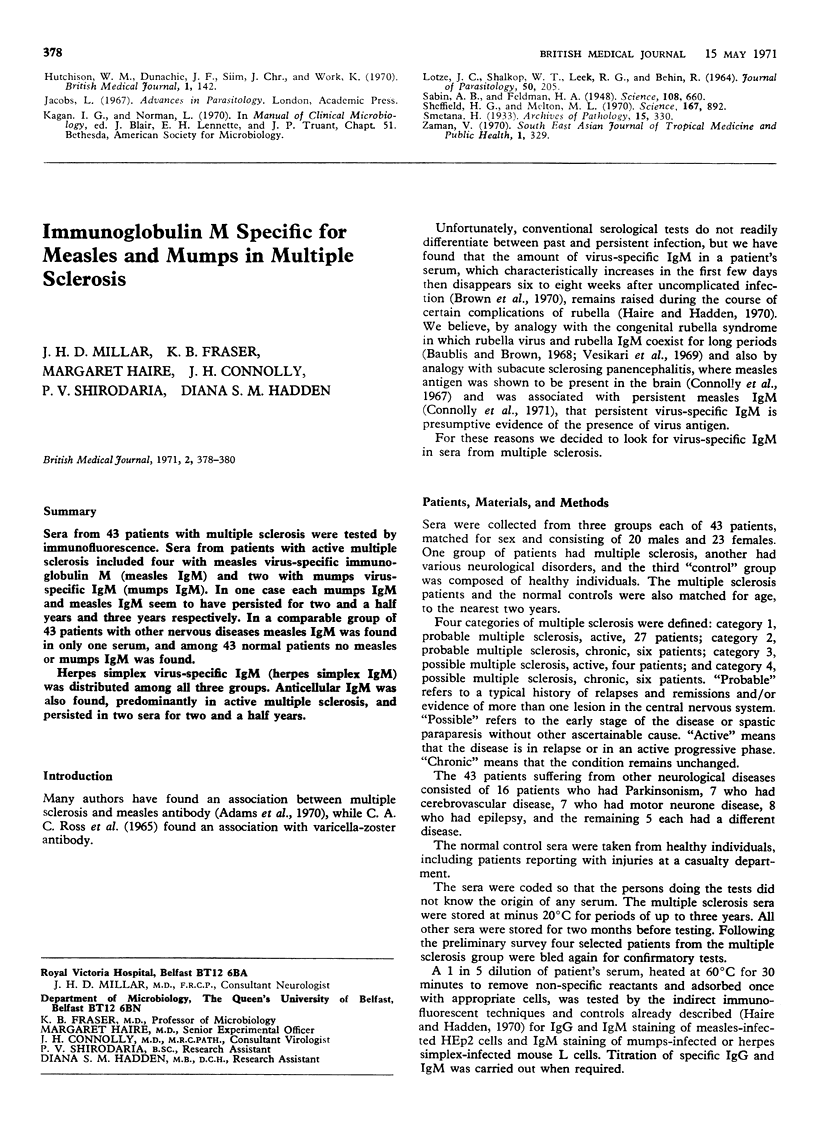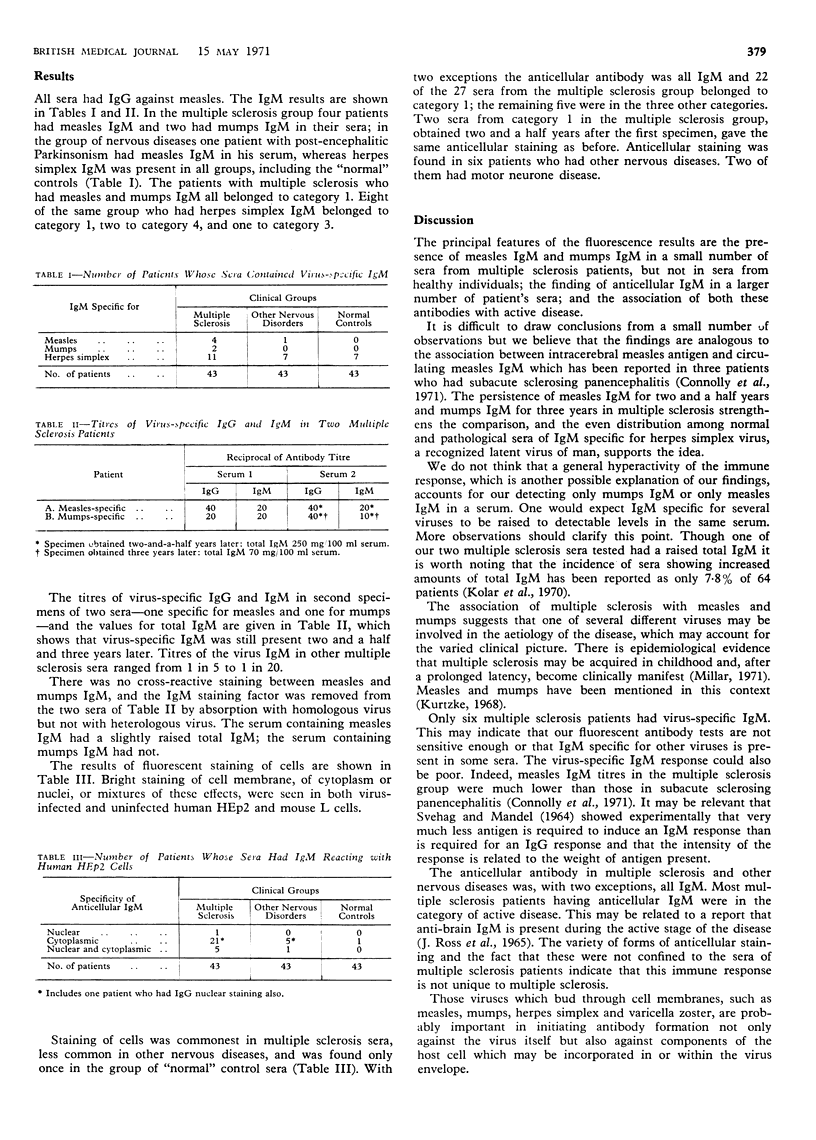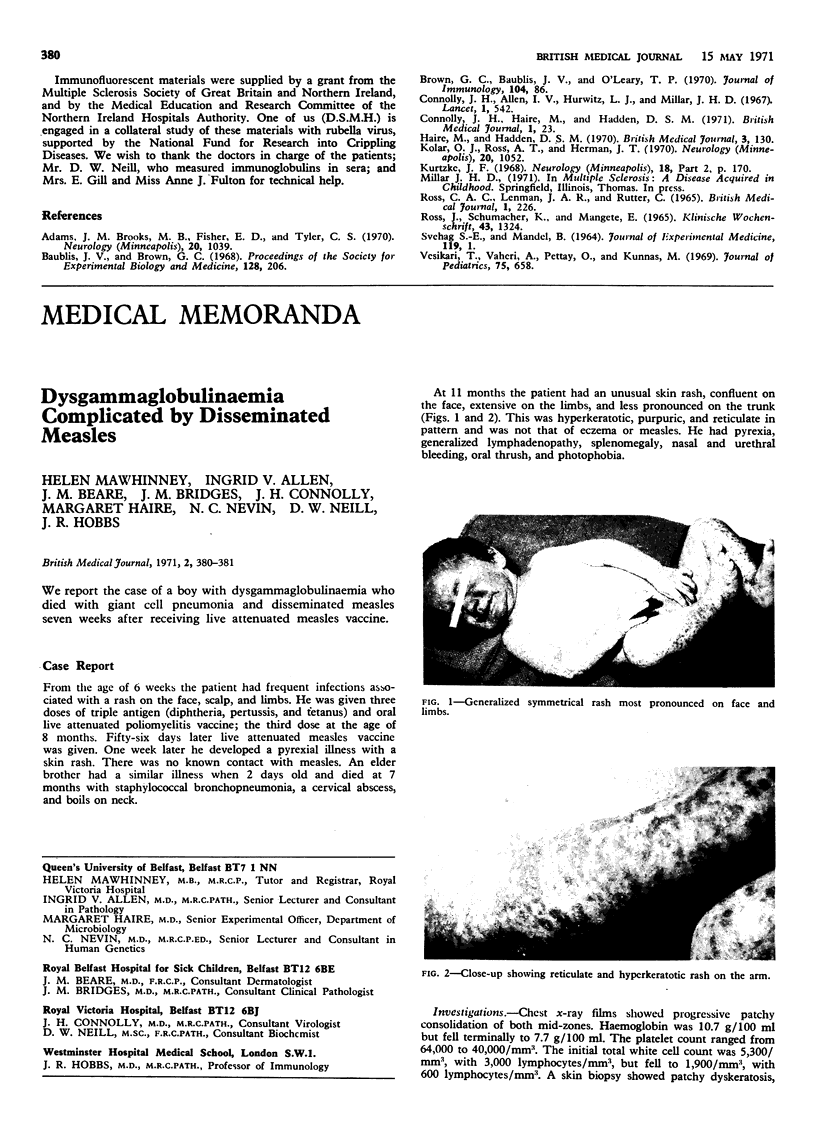Abstract
Sera from 43 patients with multiple sclerosis were tested by immunofluorescence. Sera from patients with active multiple sclerosis included four with measles virus-specific immunoglobulin M (measles IgM) and two with mumps virus-specific IgM (mumps IgM). In one case each mumps IgM and measles IgM seem to have persisted for two and a half years and three years respectively. In a comparable group of 43 patients with other nervous diseases measles IgM was found in only one serum, and among 43 normal patients no measles or mumps IgM was found.
Herpes simplex virus-specific IgM (herpes simplex IgM) was distributed among all three groups. Anticellular IgM was also found, predominantly in active multiple sclerosis, and persisted in two sera for two and a half years.
Full text
PDF


Images in this article
Selected References
These references are in PubMed. This may not be the complete list of references from this article.
- Adams J. M., Brooks M. B., Fisher E. D., Tyler C. S. Measles antibodies in patients with multiple sclerosis and with other neurological and nonneurological diseases. Neurology. 1970 Oct;20(10):1039–1042. doi: 10.1212/wnl.20.10.1039. [DOI] [PubMed] [Google Scholar]
- Baublis J. V., Brown G. C. Specific response of the immunoglobulins to rubella infection. Proc Soc Exp Biol Med. 1968 May;128(1):206–210. doi: 10.3181/00379727-128-32979. [DOI] [PubMed] [Google Scholar]
- Brown G. C., Baublis J. V., O'Leary T. P. Development and duration of mumps fluorescent antibodies in various immunoglobulin fractions of human serum. J Immunol. 1970 Jan;104(1):86–94. [PubMed] [Google Scholar]
- Connolly J. H., Allen I. V., Hurwitz L. J., Millar J. H. Measles-virus antibody and antigen in subacute sclerosing panencephalitis. Lancet. 1967 Mar 11;1(7489):542–544. doi: 10.1016/s0140-6736(67)92117-4. [DOI] [PubMed] [Google Scholar]
- Haire M., Hadden D. S. Immunoglobulin responses in rubella and its complications. Br Med J. 1970 Jul 18;3(5715):130–132. doi: 10.1136/bmj.3.5715.130. [DOI] [PMC free article] [PubMed] [Google Scholar]
- ROSS C. A., LENMAN J. A., RUTTER C. INFECTIVE AGENTS AND MULTIPLE SCLEROSIS. Br Med J. 1965 Jan 23;1(5429):226–229. doi: 10.1136/bmj.1.5429.226. [DOI] [PMC free article] [PubMed] [Google Scholar]
- Ross J., Schumacher K., Mangete E. Nachweis und Identifizierung eines Faktors von Immunglobulin-M-Natur und Antikörper-Eigenschaft im Serum von Kranken mit Multipler Sklerose. Klin Wochenschr. 1965 Dec 15;43(24):1324–1331. doi: 10.1007/BF01745801. [DOI] [PubMed] [Google Scholar]
- Vesikari T., Vaheri A., Pettay O., Kunnas M. Congenital rubella: immune response of the neonate and diagnosis by demonstration of specific IgM antibodies. J Pediatr. 1969 Oct;75(4):658–664. doi: 10.1016/s0022-3476(69)80463-4. [DOI] [PubMed] [Google Scholar]




